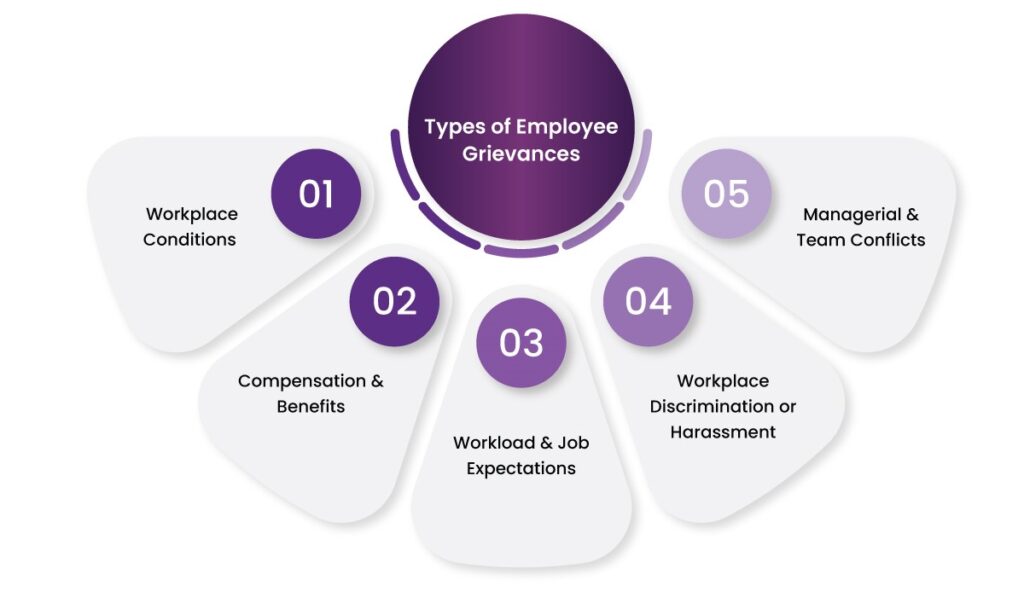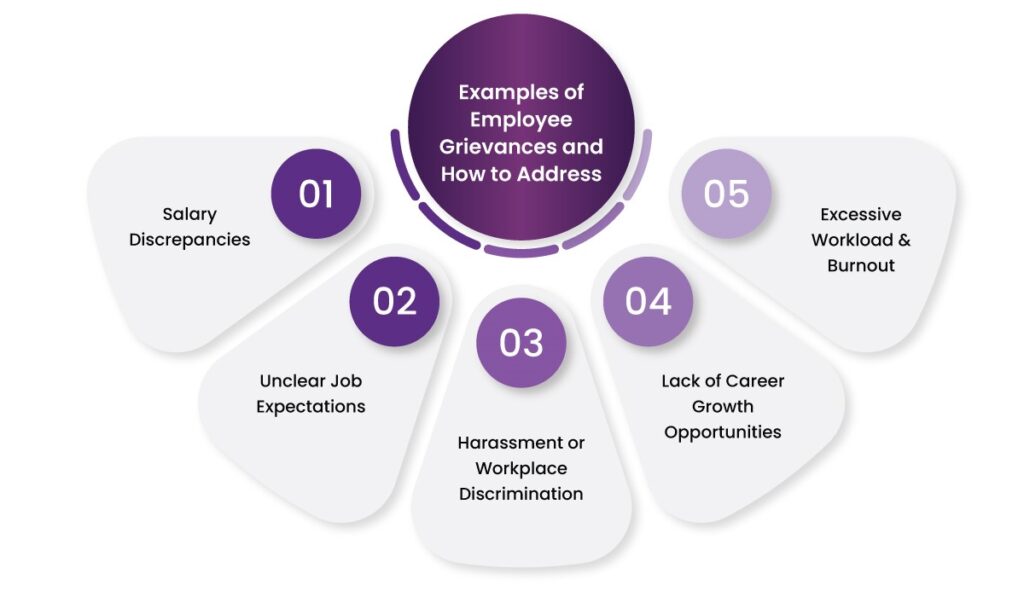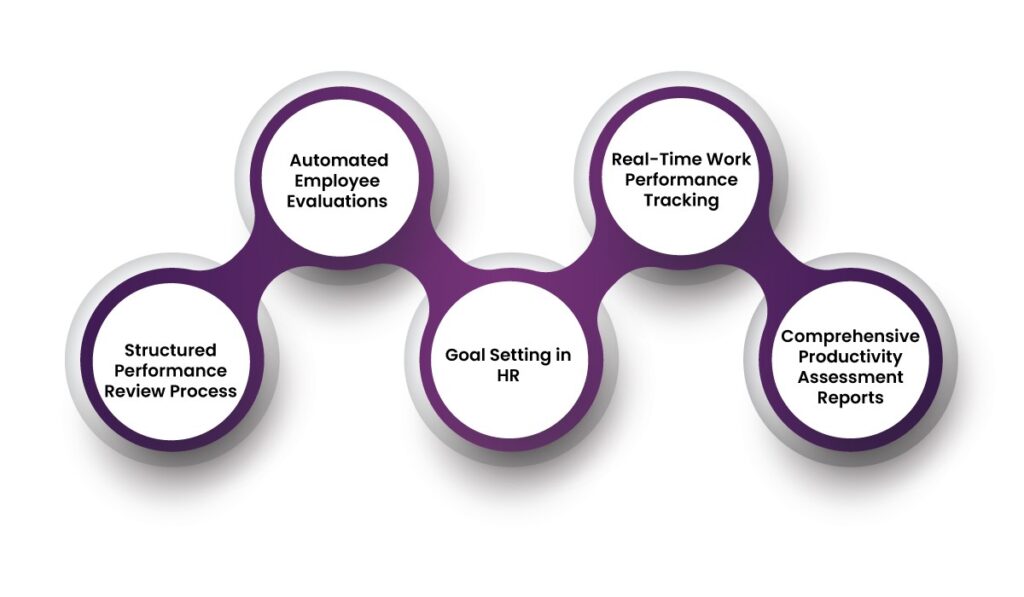Every organization, no matter how well-managed, will encounter employee grievances at some point. When employees feel dissatisfied or unfairly treated, their concerns can impact performance management and overall workplace morale. Ignoring grievances may result in lower employee engagement, higher turnover rates, and reduced productivity.
So, what exactly is an employee grievance, and how can businesses address it effectively? More importantly, how does performance management play a role in resolving grievances and fostering a harmonious workplace? Let’s explore these aspects in depth.
Table of Contents
What is an Employee Grievance?
An employee grievance refers to a formal or informal complaint raised by an employee regarding workplace issues. It may arise from unfair treatment, workplace discrimination, harassment, salary discrepancies, workload mismanagement, or conflicts with colleagues or supervisors.
A strong performance management strategy can help address grievances proactively by tracking concerns, ensuring transparency in evaluations, and fostering open communication between employees and management.
Types of Employee Grievances
Employee grievances can arise from various workplace issues, impacting overall morale, job satisfaction, and productivity. Organizations that implement a structured performance management system can address grievances more effectively by promoting fair employee evaluations, transparent policies, and open communication. Below are the most common types of grievances employees may raise and how businesses can manage them.
1. Workplace Conditions
Employees expect a safe, well-equipped, and comfortable working environment. Grievances related to workplace conditions often stem from unsafe working environments, lack of proper resources, poor hygiene, or inadequate facilities. Neglecting these concerns not only affects employee well-being but also puts organizations at risk of legal and regulatory violations.
A robust work performance tracking system can help managers identify concerns related to workplace safety and resource allocation, ensuring prompt resolution. Conducting regular workplace audits and collecting employee feedback can proactively mitigate these issues.
2. Compensation & Benefits
Disputes over salary discrepancies, delayed payments, inequitable bonuses, or inadequate benefits are among the leading causes of employee dissatisfaction. Employees want to feel valued and fairly compensated for their contributions, and transparent employee evaluations play a crucial role in aligning compensation with performance.
A structured performance management system ensures that employee evaluations are objective, linking pay raises and incentives to productivity assessment and goal achievement. Additionally, businesses should clearly communicate compensation policies and provide employees with easy access to payroll-related information to avoid misunderstandings.
3. Workload & Job Expectations
Unrealistic workload expectations often lead to stress, burnout, and frustration. When job responsibilities exceed an employee’s capacity, performance naturally declines, and grievances related to excessive workload arise.
An effective performance review process helps managers balance workloads, assess productivity levels, and redefine job expectations where necessary. Implementing goal setting in HR ensures that employees receive realistic and achievable targets, preventing undue pressure. Regular check-ins between employees and managers further help in adjusting workload distribution based on individual strengths and challenges.
4. Workplace Discrimination or Harassment
Grievances related to discrimination or harassment are serious concerns that can have legal, ethical, and reputational consequences for an organization. Discrimination based on race, gender, age, religion, or disability can create a toxic workplace, affecting employee retention and engagement.
A well-implemented performance management system fosters a culture of fairness and inclusivity. Incorporating work performance tracking tools can help organizations monitor workplace behavior and take corrective action against discrimination or harassment. Additionally, HR teams must establish clear policies, provide safe reporting channels, and conduct regular training on workplace ethics to ensure all employees feel respected and valued.
5. Managerial & Team Conflicts
Conflicts with supervisors or colleagues can arise due to miscommunication, favoritism, or biased decision-making. Employees may feel overlooked when recognition and rewards are not distributed fairly.
An effective goal setting in HR process ensures that expectations are clearly defined, reducing ambiguity and minimizing workplace disputes. Additionally, regular performance review processes help HR teams address managerial concerns and interpersonal issues, ensuring that conflicts are resolved constructively. Open communication, mediation programs, and leadership training can further contribute to a harmonious and collaborative work environment.

Why Addressing Employee Grievances Matters?
Creating a workplace where employees feel heard and valued is essential for long-term business success. Unresolved grievances can negatively impact performance management, employee engagement, and overall productivity. A structured approach that includes work performance tracking, employee evaluations, and a well-defined performance review process ensures that concerns are addressed fairly and efficiently.
1. Enhances Employee Satisfaction
When grievances are handled promptly, employees feel that their concerns matter. This fosters higher job satisfaction and a stronger commitment to organizational goals. By integrating a goal setting in HR strategy, businesses can provide employees with clear expectations and a sense of direction, reducing frustration and misunderstandings.
2. Improves Retention Rates
Employees are more likely to stay with an organization that listens to their concerns and takes proactive steps to resolve them. A well-executed performance management system ensures that grievances related to workload, compensation, and management are addressed effectively, leading to improved employee retention rates.
3. Boosts Productivity
Unresolved grievances create workplace distractions and hinder productivity assessment efforts. When employees can focus on their work without frustration or uncertainty, they perform better. Work performance tracking helps businesses identify patterns of dissatisfaction and resolve concerns before they escalate.
4. Strengthens Workplace Relationships
Effective grievance resolution promotes open communication between employees and management, reducing misunderstandings and workplace conflicts. When HR teams incorporate employee evaluations into their performance review process, they gain deeper insights into employee concerns and engagement levels.
5. Ensures Compliance & Reduces Legal Risks
Ignoring grievances can expose a company to legal disputes, financial penalties, and reputational damage. A structured performance review process ensures that complaints are handled ethically and documented properly, minimizing risks associated with non-compliance.
Addressing grievances efficiently through performance management, work performance tracking, and goal setting in HR helps businesses foster a positive work environment, ensuring long-term success and a motivated workforce.

Examples of Employee Grievances and How to Address Them?
Employee grievances can arise due to workplace dissatisfaction, misunderstandings, or unfair practices. Effectively addressing these concerns requires performance management, structured employee evaluations, and a well-defined performance review process. Below are some common grievances and solutions to resolve them efficiently.
1. Salary Discrepancies
Example: An employee finds out they are earning less than a colleague with the same job title and responsibilities.
Solution: Implementing a transparent performance management system ensures that salary decisions are based on skills, experience, and contributions rather than favoritism. A structured performance review process helps determine fair compensation adjustments, ensuring employee satisfaction and trust.
2. Unclear Job Expectations
Example: An employee feels overwhelmed with tasks that were not originally part of their role.
Solution: Goal setting in HR plays a crucial role in defining job responsibilities clearly. Employees should have well-documented job descriptions with measurable performance objectives that align with company goals and individual expertise. Regular performance evaluations ensure expectations remain clear and achievable.
3. Harassment or Workplace Discrimination
Example: An employee experiences bias from a manager, affecting employee evaluations and career growth.
Solution: Establishing strict anti-discrimination policies and implementing work performance tracking ensures that performance assessments remain objective and fair. Regular productivity assessments help identify any biased trends in employee treatment, allowing HR teams to take immediate corrective action.
4. Lack of Career Growth Opportunities
Example: Employees feel stagnant in their roles, with no clear path for growth or recognition.
Solution: A structured performance review process helps provide constructive feedback and development plans. Offering employees training programs, mentorship, and career progression paths encourages motivation and professional growth. Goal setting in HR ensures employees know how to advance within the organization.
5. Excessive Workload & Burnout
Example: Employees consistently work overtime without adequate compensation, leading to burnout.
Solution: Work performance tracking helps HR and managers identify uneven workload distribution. Addressing these issues through delegation, automation, and efficient performance management strategies can create a healthier, more productive work environment.
A well-structured performance management system that incorporates employee evaluations, productivity assessments, and transparent feedback is essential for resolving grievances effectively and fostering a positive workplace culture.

How Synergy HCM Enhances Employee Grievance Handling and Performance Management ?
Handling employee grievances effectively requires a transparent, structured, and data-driven approach. Without a proper system in place, organizations risk miscommunication, dissatisfaction, and productivity losses. Synergy HCM, an advanced HRMS by Helixbeat, streamlines performance management while fostering workplace fairness and efficiency.
- Automated Employee Evaluations – Synergy HCM ensures that employee evaluations are unbiased and based on measurable performance metrics, helping HR teams make fair career progression decisions.
- Real-Time Work Performance Tracking – With continuous work performance tracking, managers can monitor workloads, employee contributions, and engagement levels, ensuring fair task distribution.
- Structured Performance Review Process – A well-defined performance review process helps align compensation, promotions, and feedback with employee contributions, reducing disputes.
- Goal Setting in HR – Synergy HCM enables clear and measurable goal setting in HR, ensuring employees understand their performance expectations and career growth paths.
- Comprehensive Productivity Assessment Reports – With data-driven productivity assessments, HR teams gain valuable insights into employee efficiency, engagement, and areas needing improvement.

By leveraging machine learning in HR, Synergy HCM minimizes workplace disputes, enhances employee engagement, and ensures grievances are addressed efficiently. A structured performance management system promotes a transparent and harmonious work environment, fostering long-term workplace satisfaction and business success.
Final Words
Employee grievances are inevitable but addressing them effectively is essential for maintaining a positive and productive work environment. A well-structured performance management system ensures fairness, transparency, and continuous improvement, benefiting both employees and organizations.
By integrating employee evaluations, work performance tracking, and a structured performance review process, businesses can proactively manage grievances before they escalate.
Synergy HCM offers a comprehensive solution to streamline goal setting in HR, optimize productivity assessments, and enhance overall workplace satisfaction.
Handle employee grievances the right way—invest in structured performance management today!
FAQs
1. How can performance management help in handling grievances?
A strong performance management framework ensures transparency, unbiased evaluations, and clear career growth paths, minimizing workplace conflicts.
2. What are some common examples of employee grievances?
Common grievances include salary disputes, workload stress, workplace discrimination, lack of promotions, and conflicts with colleagues or supervisors.
3. How can work performance tracking improve grievance handling?
Tracking employee performance through data-driven insights helps HR address concerns related to unfair workload distribution, bias, or career stagnation.
4. What role does the performance review process play in resolving grievances?
Regular performance review processes ensure employees receive fair evaluations, reducing disputes over promotions, salaries, or workload assignments.
5. How does goal setting in HR prevent grievances?
Setting clear goals aligns employee expectations with company objectives, reducing misunderstandings and dissatisfaction.














